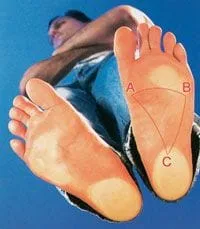Understanding Human Biomechanics:
- The joints and muscles of the body function most efficiently when they are in physical balance. Principles of engineering have shown that with any physical entity, whether it is a bridge, a building, or the human body- Structure dictates function.
- The body is a biomechanical kinetic chain where abnormal movements at one line, or joint, can interfere with proper movements at other joints.
- During standing and walking, our bodies are subjected to natural forces and postures that can inflict mechanical stress and strain throughout the interrelated chain of joints and muscles.
- When foot imbalance is present, there is a negative impact on the knees, hips, pelvis, and spine. Some patients must have these abnormal forces reduced before they can achieve improved spinal function.
- Pronation describes the rotation of a body part downward or inward. It is actually a normal motion that occurs when walking; however, if it happens excessively, pronation can cause global postural problems. The major cause of over-pronation is a decrease in the arch height.
Postural Effects from Imbalances in the Feet:
- A loss of arch height will cause a flattening and rolling in of the foot- this is termed pronation. Because everything is connected, the bones of the leg also inwardly rotate.
- Excessive rotation of the bones of the leg (tibia and femur) will cause unnecessary stresses on the knee as well as twisting of the pelvis and spine. If the pronation is more prevalent on one side, there can be a resultant unleveling of the pelvis and a functional scoliosis.
- Tilting of the pelvis places tension on muscles and connective tissues, which can eventually lead to chronic back problems.
- High levels of heel-strike shock can result from breakdown of the body's natural "shock absorbers." The shock wave then transmits up the kinetic chain causing painful symptoms all the way up to the head, slowed recovery of leg and spine injuries, and aggravation of other conditions

